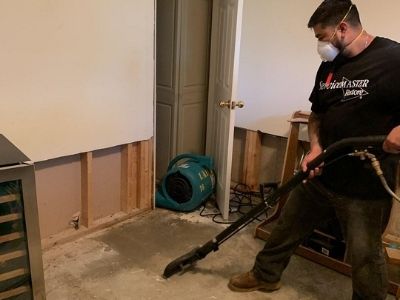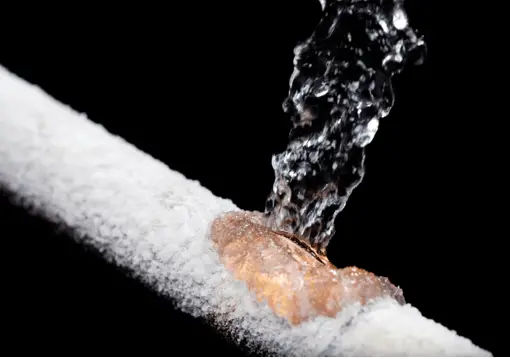Ruptured Pipes? No Panic! How to Identify as well as Repair Promptly
Ruptured Pipes? No Panic! How to Identify as well as Repair Promptly
Blog Article
What're your thoughts and feelings on How to Install and Connect a New Dishwasher?

A burst pipe is a major emergency; you can only stand as you watch water you pay dearly to rejoin with the earth. In even worse situations, you discover a swimming pool on your cooking area flooring, which is an excellent journey danger, especially if you have kids around. If the pipe that ruptured was in your wall surfaces, trouble: you may require to repaint that whole section.
How can a catastrophe like a burst pipeline be prevented and also managed? Well, by paying attention to your expert emergency plumbing professionals and also complying with these rules.
Exactly how do I recognize when my pipes have ruptured?
Fluctuating water stress
Pipelines do not just burst in a day. You might have discovered that your cooking area tap or shower does not run instantly when you transform the faucet. It may stop for a couple of seconds and after that blast you with even more force than normal.
In various other instances, the water might appear regular at first, then decrease in pressure after a few secs.
Damp wall surfaces and water stains
Before a pipe ruptureds, it will leak, the majority of times. If this persistent dripping goes undetected, the leak may graduate right into a broad wound in your pipe. One easy method to prevent this emergency is to look out for damp wall surfaces advertisement water stains. These water stains will certainly lead you right to the leakage.
Puddles under pipelines as well as sinks
When a pipeline bursts, the discharge creates a puddle. It might appear that the puddle is expanding in dimension, and despite how many times you mop the pool, in a couple of mins, there's another one waiting to be cleaned up. Usually, you might not be able to trace the puddle to any type of noticeable pipelines. This is a sign to call a professional plumber.
Untraceable leaking noises
Pipeline ruptureds can take place in the most unpleasant locations, like within concrete, inside wall surfaces, or under sinks. When your home goes quiet, you might have the ability to hear an irritatingly consistent trickling noise. Even after you have actually inspected your shower head and also cooking area faucet, the trickling might proceed.
Dear reader, the dripping may be coming from a pipe inside your walls. There isn't much you can do about that, except tell an expert plumber.
Turn off the Water
When water freezes, it broadens in quantity by regarding 9 percent. And it expands with tremendous force: The stress inside pipelines might go from 40 extra pounds per square inch to 40,000 psi! No pipeline can hold that much stress, so it bursts. The break might happen where the ice types, but regularly, it takes place where water stress discovers a vulnerable point in the pipe. That may be inches or even feet from the frozen location. Discover the water shutoff valve and also turn off the water to stop more damages. You could likewise require to turn off the electrical energy also, depending on where the leaks takes place and also exactly how large it is.
Infected water
Lots of people assume a burst pipeline is a one-way outlet. Quite the contrary. As water spurts of the hole or wound in your plumbing system, impurities find their way in.
Your water might be infected from the resource, so if you can, inspect if your water tank has any problems. Nonetheless, if your alcohol consumption water is provided and purified by the local government, you need to call your plumber quickly if you see or scent anything amusing in your water.
What do I do when I spot a burst pipeline?
Your water meter will continue to run even while your water wastes. To reduce your losses, find the major controls and also turn the supply off. The water pipe are an above-ground framework beside your property.
How to Fix & Detect a Leaking Pipe
How Do I Know if a Pipe is Leaking?
Leak detection tests can help you determine if your pipe has a leak. Even if you don’t see an apparent leak, you should still conduct leak detection tests regularly to save water and money—and prevent major damage to your home.
Water meter. It can be helpful to figure out what your usual water meter usage numbers are and then monitor them regularly. To monitor your meter, first, turn off all water faucets in your home. Check the meter and write down the numbers. In a few hours, check the meter again. If the numbers have changed, you have a leak. Water gauge. Use a water gauge to test your water pressure. Your showerhead should produce a certain amount of water pressure based on its model and design. If the pressure is lower than it is supposed to be for that specific showerhead, your home likely has a leak. Puddles. Look inside your bathroom, laundry, and kitchen sink cabinets. Puddles around the cabinets or around toilets, tubs, showers, and washing machines indicate the presence of a leaking pipe. You may also notice loose tiles, peeling or flaking paint, or mold caused by water accumulation. Napkin test. Even if you don’t see any puddles, you may still have a leak. You can test for water leaks in the bathroom, laundry, and kitchen by wiping below-sink connections with a napkin, paper towel, or piece of toilet paper. If it becomes damp, you probably have a leaking pipe under the sink. Discolored walls. Walls that are discolored—usually with brown or yellow stains—or bulging might mean that they have been impacted by water damage caused by a leaking pipe. Smell. A leaky pipe will create sitting water, and over time, that water may develop a musty smell. If your home smells musty, but you can’t locate the source, it may be due to a leak. Steps for Fixing a Leaking Pipe
A leaky drain can be remedied by tightening the pipe base, replacing the drain seal, caulking the rim, and tightening the pipe nut. Similarly, a leaking toilet pipe can be treated by tightening the packing nut. You may also need to replace the valve. A leaky faucet may just need tightening or replacement of the washers. If that doesn’t work, consider replacing your faucet. If your pipe has a hole in it, you may want to use a pipe leak sealer or pipe leak tape. This quick fix for water pipe leaks can also temporarily fix a copper pipe leak. https://www.ahs.com/home-matters/quick-tips/how-to-tell-if-pipes-are-leaking/

Do you like reading up on How to install a dishwasher safely? Make a remark down below. We would be delighted to know your feelings about this blog entry. Hoping that you come back again in the future. Liked our review? Please share it. Let others find it. I value reading our article about How to Install and Connect a New Dishwasher.
Estimating
Report this page